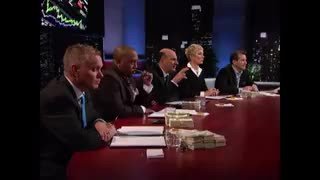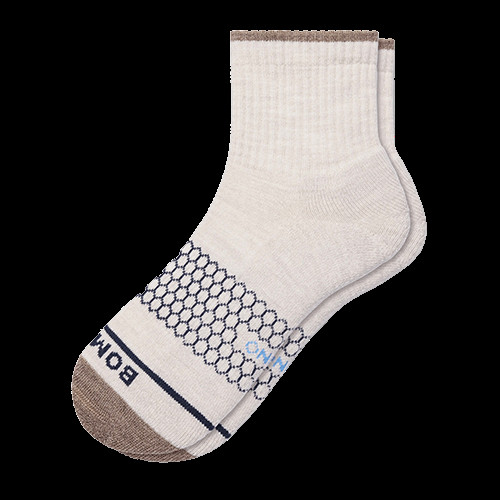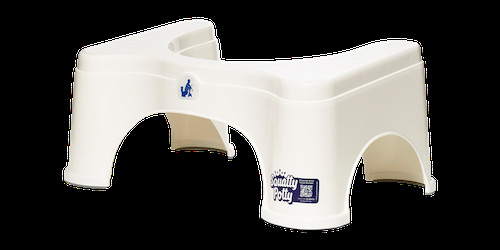For fifteen seasons, ABC’s “Shark Tank” has captivated audiences by transforming business negotiations into compelling entertainment. Aspiring entrepreneurs step into the tank, armed with innovative ideas and fervent pitches, hoping to secure investments from the savvy Sharks. But for those eager to witness these deals unfold and learn from the entrepreneurial journeys, the burning question remains: Where Can I Watch Shark Tank?
Whether you’re a long-time fan or new to the show, finding where to watch Shark Tank episodes is easier than ever. You can catch the latest episodes on ABC during its primetime slot. For viewers who prefer streaming, Hulu is your go-to platform, offering a wide range of episodes, including the most recent seasons. Amazon Prime Video also provides options to purchase or rent episodes and seasons, giving you flexibility in how you watch. Additionally, keep an eye on platforms like YouTube TV or services that offer live TV streaming with ABC included in their packages, ensuring you never miss a pitch.
Beyond just finding where to watch Shark Tank, understanding the show’s enduring appeal and its reflection of the American entrepreneurial spirit adds another layer of enjoyment. Let’s dive into the journey of “Shark Tank” and explore why it remains a must-watch for business enthusiasts and casual viewers alike.
 A supercut of clips from the show Shark Tank.
A supercut of clips from the show Shark Tank.
If you immerse yourself in “Shark Tank” as a dedicated viewer, you’ll notice it’s more than just a reality show. It’s a mirror reflecting the evolving landscape of the American economy. Debuting in August 2009, amidst the Great Recession, the show has chronicled the aspirations of over 1,275 entrepreneurs. The initial focus on traditional products has shifted to mirror the rise of e-commerce, the tech boom reminiscent of Silicon Valley, and the resilient innovation spurred by global events.
“Shark Tank” Over the Years
Season 1 (2009-10): The Great Recession Era
Premiering during an economic downturn, Season 1 featured entrepreneurs like Tod Wilson, showcasing resilience and determination against the backdrop of financial hardship.
 Tod Wilson from Season 1 pitching sweet potato pies on Shark Tank.
Tod Wilson from Season 1 pitching sweet potato pies on Shark Tank.
Season 3 (2012): The Cuban Effect
With economic recovery underway, Season 3 welcomed Mark Cuban, injecting higher stakes and a faster pace into the negotiations, reflecting a more optimistic business environment.
 Entrepreneurs in Season 3 presenting paddleboards to the Sharks.
Entrepreneurs in Season 3 presenting paddleboards to the Sharks.
Season 4 (2012-2013): The Rise of Retail Stars
Season 4 marked the debut of Scrub Daddy, the now-iconic smiley face sponge. Lori Greiner, the “QVC Queen,” played a pivotal role in catapulting it to phenomenal success, demonstrating the power of retail partnerships.
 The famous Scrub Daddy sponge, a Shark Tank success story.
The famous Scrub Daddy sponge, a Shark Tank success story.
Season 5 (2013-14): Tech Takes Center Stage
The increasing influence of technology was evident in Season 5, featuring products like DoorBot, which later evolved into Ring, acquired by Amazon for billions, highlighting the Sharks’ growing interest in tech ventures.
 The original DoorBot device pitched in Season 5 of Shark Tank.
The original DoorBot device pitched in Season 5 of Shark Tank.
Season 6 (2014-15): Valuations and Values
Season 6 saw the founders of Bombas face tough questions about their valuation, yet their sock company’s subsequent triumph underscored the increasing consumer interest in socially conscious businesses.
 Founders of Bombas sock company pitching to the Sharks in Season 6.
Founders of Bombas sock company pitching to the Sharks in Season 6.
The show also mirrors consumer trends, from online dating apps like Coffee Meets Bagel to the fusion of capitalism and social responsibility embodied by Bombas, and the accessibility of professional services like Everlywell. Of course, “Shark Tank” also presents its share of quirky, short-lived novelty items, a testament to the diverse range of entrepreneurial ideas.
 A pair of Bombas socks, highlighting their socially conscious business model.
A pair of Bombas socks, highlighting their socially conscious business model.
Kevin O’Leary, famously known as Mr. Wonderful, accurately describes the show’s essence: “’Shark Tank’ is not a game show… It’s real life. It’s real investing, real money. And it reflects the real economy.” Beyond financial deals, the show provides invaluable exposure, arguably its most significant contribution to the entrepreneurial ecosystem. It serves as a powerful platform for self-promotion, a crucial element for any burgeoning business in America.
This exposure remains incredibly relevant today. As “Shark Tank” continues into its 16th season, the economic landscape is complex. While macro indicators might suggest stability, many entrepreneurs experience ongoing challenges. The Sharks themselves are adapting, showing less enthusiasm for inflated valuations and focusing more on early-stage startups. Barbara Corcoran notes this shift towards “mom-and-pa type people,” who often make for compelling television narratives.
The magic of “Shark Tank” lies in fostering the belief that anyone with a compelling idea and determination can succeed in America. It champions the American dream, a sentiment echoed by Mark Cuban: “The idea that maybe we had a little bit to do with amplifying entrepreneurship and making the American dream stronger, that’s pretty damn cool, you know?”
From Sweet Potato Pies to Smart Doorbells
“Shark Tank” evolved from the Japanese show “Tigers of Money” and its adaptations “Dragons’ Den” in Britain and Canada. Mark Burnett, known for reality TV hits, brought the concept to American screens in 2009.
Ironically launched during the Great Recession, “Shark Tank” emerged when traditional financial avenues were constricted. Daymond John, founder of FUBU, joined the show seeking portfolio diversification during economic uncertainty. Season 1 pitches often came from small businesses seeking modest investments, reflecting the economic climate.
 Negotiations in Shark Tank: Entrepreneurs making a deal with the Sharks.
Negotiations in Shark Tank: Entrepreneurs making a deal with the Sharks.
Producers initially scouted entrepreneurs through local media and networks. Tod Wilson, the first-ever pitcher, sought expansion funding for his sweet potato pie bakery. He secured a deal with Daymond John and Barbara Corcoran, marking an early success story.
By 2012, Season 3 reflected renewed optimism. The rise of e-commerce and tech giants like Uber and Airbnb inspired bolder entrepreneurial ambitions. “Shark Tank” mirrored this shift, actively recruiting more tech-focused ventures. The show’s popularity surged, reaching 9.1 million viewers by Season 6, solidifying entrepreneurship as a viable path to success in the public consciousness.
Angela Lee from Columbia Business School emphasizes the show’s impact on mindset: “The idea that anybody can make it into that top echelon, I think, is an incredibly American mind set.” Average company valuations on the show soared from $376,000 in Season 1 to $2.4 million a decade later, as tracked by Halle Tecco.
However, Sharks haven’t always picked the biggest winners. In 2013, Jamie Siminoff pitched DoorBot. His memorable pitch, starting with knocking on the closed doors of the tank, led to a demonstration of his video doorbell. Despite impressive sales, only Kevin O’Leary offered a deal, which Siminoff famously declined due to royalty terms.
A year later, DoorBot became Ring, and Amazon acquired it for over $1 billion. Siminoff acknowledges the pivotal role of “Shark Tank” in Ring’s success, attributing awareness and credibility gained from the show as crucial factors. He returned as a guest Shark in 2018, receiving a standing ovation.
 The Ring video doorbell, a Shark Tank miss turned billion-dollar success.
The Ring video doorbell, a Shark Tank miss turned billion-dollar success.
The QVC Effect and Consumer Appeal
“Shark Tank” has featured a spectrum of inventions, from the practical to the outlandish. While some pitches involve complex technologies, the show often gravitates towards products with immediate consumer appeal. Robert Herjavec learned early on that viewers connect more with relatable, consumer-facing businesses than back-end technologies.
This realization shifted his investment strategy towards products that resonate with everyday consumers, often found in retail environments like TJ Maxx, Target, or QVC. Lori Greiner’s expertise in the QVC market aligns perfectly with this focus. She emphasizes understanding “What is a winning product? What do people want?” as fundamental to success on the show.
“Shark Tank” Over the Years
Season 7 (2015-16): Viral Fitness
Simply Fit Board, an exercise balance board, secured a deal with Lori Greiner in Season 7. Its instant popularity was evident, with founders reporting million-dollar sales within 24 hours of the episode airing.
 The Simply Fit Board, a fitness product that went viral after Shark Tank.
The Simply Fit Board, a fitness product that went viral after Shark Tank.
Season 11 (2019-20): Marketing Platform Power
By Season 11, entrepreneurs clearly recognized “Shark Tank” as a powerful marketing platform, understanding the exposure’s potential beyond just securing investment.
 Knife Aid, a sharpening service featured in Season 11, highlighting marketing benefits of Shark Tank.
Knife Aid, a sharpening service featured in Season 11, highlighting marketing benefits of Shark Tank.
Season 12 (2020-21): Pandemic Pivot
Season 12 highlighted pandemic resilience, featuring businesses like Foam Party Hats that successfully adapted to changing market conditions during global disruptions.
 Foam Party Hats, a business that pivoted during the pandemic, featured in Season 12.
Foam Party Hats, a business that pivoted during the pandemic, featured in Season 12.
Season 15 (2023-24): Back to Basics
Season 15 saw a return to more first-time entrepreneurs, echoing the show’s early seasons and reinforcing its accessibility for everyday inventors and small business owners.
 Lady Alpha female urinal product pitched in Season 15 of Shark Tank.
Lady Alpha female urinal product pitched in Season 15 of Shark Tank.
Consumer spending drives over two-thirds of the U.S. economy. Lori Greiner capitalizes on this by investing in relatable products. Her notable successes include Scrub Daddy, Simply Fit Board, and Squatty Potty, all catering to everyday consumer needs.
 The Squatty Potty, another quirky but successful product from Shark Tank.
The Squatty Potty, another quirky but successful product from Shark Tank.
Robert Herjavec’s most memorable investment, Tipsy Elves (ugly Christmas sweaters), with $200 million in sales, further exemplifies the power of consumer-focused, fun products on “Shark Tank.”
Beyond the Tank: Marketing and Reality
Venture capitalists recognize “Shark Tank’s” role in popularizing business concepts. Michael Jones from Science Inc. notes its value in setting valuation expectations for entrepreneurs, especially those outside major investment circles.
However, the show simplifies the complex deal-making process. Due diligence, financial audits, and market analysis happen off-screen. A Forbes analysis revealed that roughly half of the deals made on air don’t finalize, highlighting the difference between TV entertainment and real-world investment. Taryn Jones Laeben of IRL Ventures emphasizes the show’s primary function as a platform for promoting entrepreneurship and small businesses, rather than a direct representation of venture capital.
Tod Wilson, from the first episode, exemplifies this reality. Despite a handshake deal, he opted for a bank loan instead. His continued success in supermarkets and online demonstrates that “Shark Tank” is just one path to business growth. The high failure rate of small businesses (nearly 50% within five years) underscores the ongoing challenges entrepreneurs face, even with “Shark Tank” exposure.
Angela Lee points out that success stories are amplified, while the struggles are often unseen. Entrepreneurs themselves often view “Shark Tank” primarily as a marketing opportunity, not just a funding source.
Sarah Paiji Yoo, founder of Blueland, already had significant VC funding when she appeared on the show. Her goal was to leverage Mr. O’Leary’s investment for “driving more awareness” and credibility. Blueland’s subsequent $200 million+ sales affirm the marketing power of the show.
 Blueland's eco-friendly cleaning products, benefiting from Shark Tank's marketing reach.
Blueland's eco-friendly cleaning products, benefiting from Shark Tank's marketing reach.
Dave Heath, co-founder of Bombas, called the show a “megaphone.” Their $1.2 million sales surge in two months post-appearance and $1.7 billion+ lifetime revenue illustrate the immense marketing impact. Bombas stands as the show’s most financially successful company.
 Shark Tank ending scenes, showcasing successful deals and entrepreneur dreams realized.
Shark Tank ending scenes, showcasing successful deals and entrepreneur dreams realized.
Ann Crady Weiss of Hatch strategically used her upcoming “Shark Tank” appearance to secure a deal with Target even before filming, highlighting the show’s influence on retail partnerships.
 Hatch baby products, showcasing the retail partnerships influenced by Shark Tank exposure.
Hatch baby products, showcasing the retail partnerships influenced by Shark Tank exposure.
Mr. O’Leary summarizes the show’s enduring appeal: “We turn you into a rock star and you become part of the ‘Shark Tank’ culture and the lore of ‘Shark Tank’… Your deal becomes legend and stays in syndication for decades. What venture capital can do that?”
In conclusion, “Shark Tank” continues to inspire and entertain. For those wondering where to watch Shark Tank, it’s readily available on ABC, Hulu, and through purchase options on platforms like Amazon Prime Video. Beyond entertainment, the show offers a fascinating glimpse into the world of entrepreneurship, reflecting economic trends and the enduring allure of the American dream. Whether you’re tuning in for business insights or simply for engaging television, “Shark Tank” remains a relevant and impactful cultural phenomenon.
